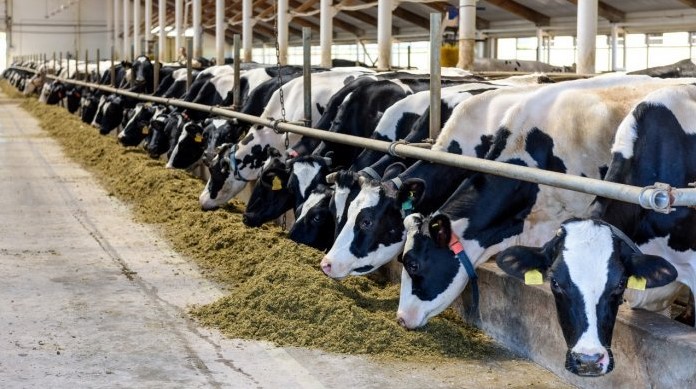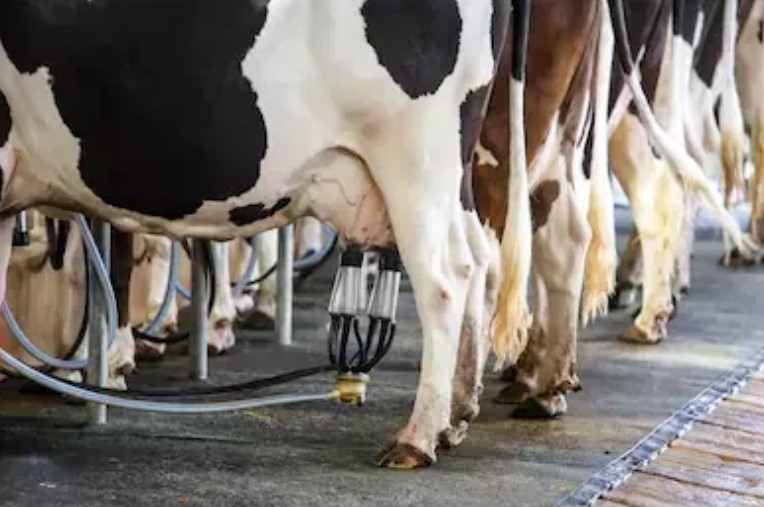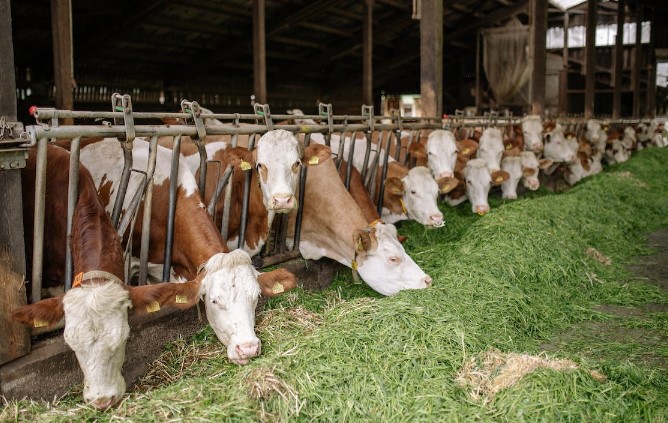

Alizamrud Corporation’s Cattle Farming in South Sulawesi. Cattle farming is the activity of raising or rearing cattle for the purpose of meat, milk, hides, and also as working animals such as draught cattle. Cattle farming can be done on a small scale (household farming) or on a large scale (commercial farming).
Here are some common types of cattle farming in Indonesia:
Beef Cattle Farming: Beef cattle farming focuses on the production of beef. The cattle raised are usually beef breeds that have good growth potential and can reach the desired slaughter weight in a relatively short time.
Dairy Cattle Farming: Dairy cattle farming aims to produce milk. Commonly raised breeds in dairy cattle farming include Holstein, Jersey, and Friesian.
Breeding Cattle Farming: Breeding cattle farming aims to produce high-quality calves (future breeding stock). The cattle raised in this type of farming are breeding stock (both female and male) that have superior genetics.

Working Cattle Farming: Working cattle farming produces cattle that can be used for tasks such as plowing fields, pulling carts, or other agricultural activities. The cattle raised in this type of farming are usually water buffalo or crossbred cattle.
To open a cattle farm in Indonesia, you need to consider the following steps:
Business Planning: Start by developing a business plan that includes market analysis, determining the type of cattle farming you want to pursue, cost and income analysis, and marketing strategies.
Location Study: Choose a suitable location for your cattle farm, considering accessibility to animal feed supplies, market access, supporting infrastructure, and other environmental factors.
Permits and Licensing: Check and fulfill the required permits for opening a cattle farm in your area. Typically, you need permits from the local government, such as environmental permits, business permits, and building permits.
Infrastructure and Facilities: Prepare the necessary infrastructure and facilities for your cattle farm, including barns, feeding areas, clean water supply, waste management systems, and livestock management systems.

Human Resources: Ensure you have an adequate and skilled workforce to manage the cattle farm, including livestock managers, feeders, and animal health personnel.
Acquire Cattle: Obtain high-quality cattle from reputable farms or breeders. Pay attention to the health and genetics of the cattle.
Animal Health: Implement a good health program for your cattle. This includes vaccination, regular deworming, monitoring cattle health, and providing medical care when needed. Also, ensure the cleanliness of the barn and the farm environment to keep the cattle healthy.
Livestock Feed: Provide balanced and quality feed for the cattle to ensure good growth and production. You can either produce your own feed by growing grass or forage, or purchase commercial feed. Make sure the cattle receive adequate nutrition and sufficient clean water.
Marketing and Distribution: Develop a marketing strategy to sell your cattle products, whether it’s meat, milk, hides, or live cattle. You can sell directly to consumers, collaborate with collectors or meat sellers, or even supply to food processing industries.
Financial Management: It’s important to manage the finances of your cattle farm carefully. Keep good records of income and expenses, calculate production costs, and prepare regular financial reports. This will help you monitor the performance of the farm and make informed decisions regarding business development.

Consultation and Training: Expand your knowledge and skills by attending training or consulting with cattle farming experts. With deeper knowledge, you can optimize the productivity and efficiency of your cattle farm.
Monitoring and Evaluation: Regularly monitor the health and development of the cattle. Evaluate the performance of the farm, identify areas for improvement, and take necessary steps to enhance productivity and profitability.
It’s important to note that establishing a cattle farm requires a significant capital investment, including purchasing cattle, constructing infrastructure, feed costs, and operational expenses. You should also consider risks such as livestock diseases, fluctuations in feed prices, and changes in government policies that may impact the livestock industry.
Before starting a cattle farm, it is recommended to conduct thorough market research, develop a realistic business plan, and consult with experienced cattle farmers or industry experts to gain better knowledge and insights about the cattle farming industry in Indonesia.
Opening a cattle farm in Indonesia involves careful planning, obtaining necessary permits, setting up appropriate infrastructure, ensuring the health and nutrition of the cattle, implementing effective marketing strategies, and managing the finances of the farm. By following these steps and seeking expert advice, Alizamrud Corporation can increase your chances of establishing a successful cattle farming business in Indonesia.